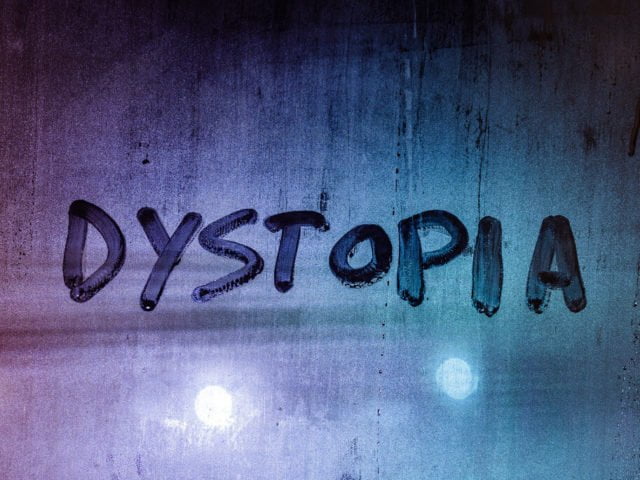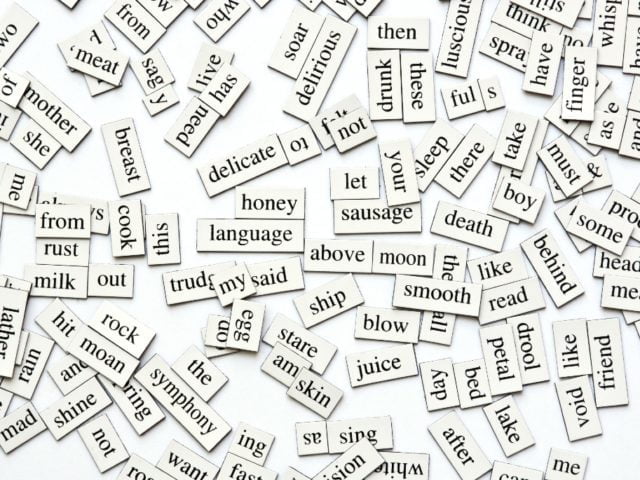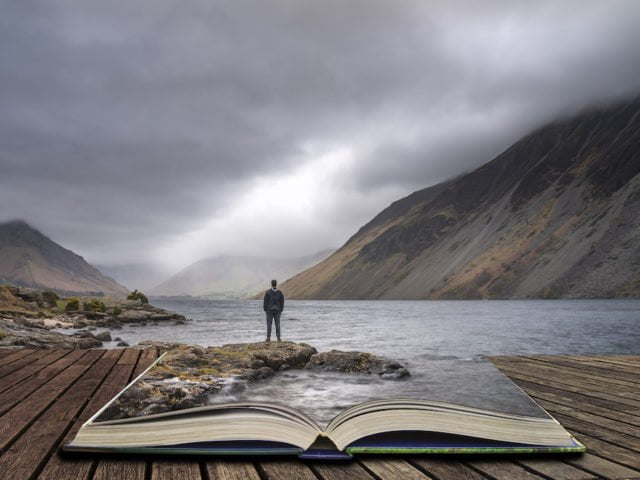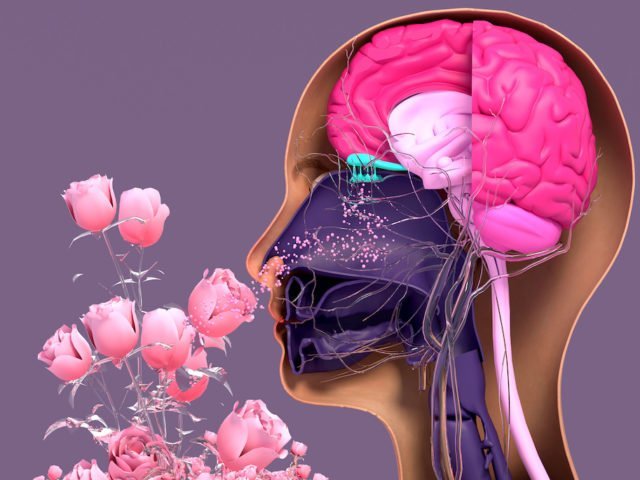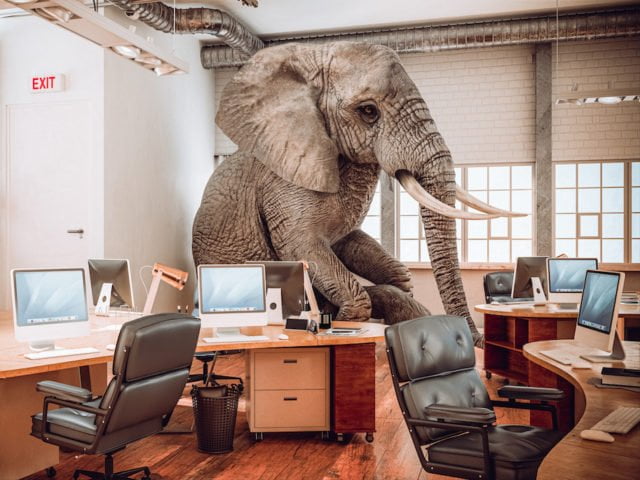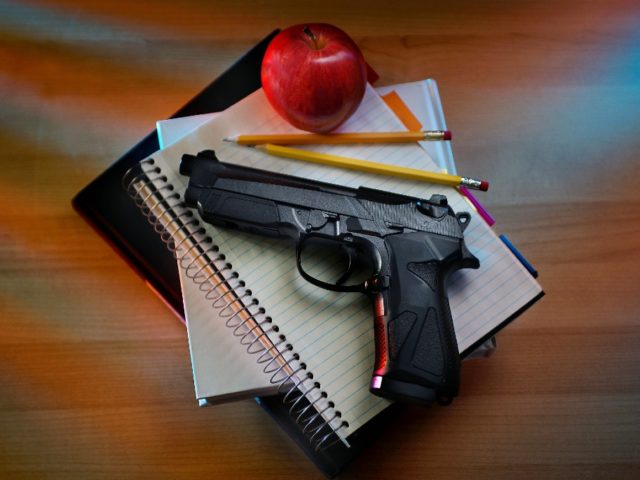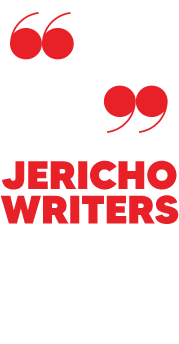Dystopian Story Ideas: Writing Inspiration
Writing dystopian fiction can be a lot of fun. When the world feels bleak and hopeless, what better way to channel your frustration and anger than into a story where the world has changed completely — unrecognisably and for the worse.
But in order to create a dystopian world, first you need new and fresh ideas — which is where our writing prompts come in.
In this article, I will be sharing what dystopian literature is, and then taking a look at some fun ideas based on various dystopian genre categories.
So whether you are writing a dystopian novel, script, or short story, take a look at our 43 dystopian writing prompts and 17 ways to find inspiration, and see where these seeds of an idea take you!
What Is Dystopian Literature?
The Oxford dictionary describes the word \'dystopia\' as: \"An imagined state or society in which there is great suffering or injustice, typically one that is totalitarian or post-apocalyptic.\"
In literary terms, dystopian fiction is simply stories set in a future where our world has been drastically changed in some way.
Whichever dystopian genre you choose to write, whether fantastical or totally plausible, remember that the story must derive from a kernel of truth, and the main character needs to be suffering as a result of that change.
Examples Of Dystopian Novels
How is the future going to look in your next novel?
There are many different ways to show a changed dystopian society. In some dystopian novels, the change is small...
Perhaps it\'s an intimidating government regime, such as Orwell\'s novel, 1984, or climate change concerns, found in Atwood\'s Oryx And Crake.
Whereas in other dystopian novels the story may be set against a post-apocalyptic backdrop where zombies roam the streets, such as in M J Carey\'s The Girl With All The Gifts, or science and technology have taken over from civilisation, as found in Huxley\'s Brave New World.
The popular YA books series and movie franchise, The Hunger Games, explores the concept of young people saving our world and communities being split into factions, having to come together to overthrow a corrupt government.
Alternatively, you may choose to explore the idea of the human population diminishing and what that would mean for human life, such as in Bethany Clift\'s Last One at the Party and Christina Sweeney-Baird\'s The End of Men.
Regardless of how far-fetched or unbelievable your ideas are, you can still make a comment about the world we live in today through your dystopian stories.
43 Dystopian Writing Prompts
The joy of writing dystopian stories is that the ideas and possibilities are endless. You can be didactic and political, or you can send your readers on a magical, crazy adventure.
As long as your story is set in the future, in a world that is suffering or post-apocalyptic, you have yourself a dystopian novel.
Ready for some ideas to kick-start your imagination? Here we go!
How To Use Our Dystopian Writing Prompts
Because dystopia is such a broad genre, and the story possibilities are endless, I have put together 43 writing prompts categorised into 8 sub-genres.
Feel free to mix and match my ideas, add lots of your own details, or even take the line and put it into your story. However you choose to use these prompts, the important thing when writing dystopia is that you keep it fresh, exciting, and relevant to the market today.
Speculative Fiction
Speculative dystopian fiction adds a touch of magic and the impossible to a dystopian world.
In the not-too-distant future, scientists have created a pill that allows humans to fly. The only problem is that they have sold it to the wrong people.
Imagine a dystopian future where our dreams literally come true — including all our nightmares.
The government decides to eradicate money and go back to a bartering system, but some people have MAGIC to barter with.
The world has always been full of invisible people... but now everyone can see them.
World War
Every country changes after a war. What will happen in your dystopian version?
The adult human race has been wiped out because of war, only children are left. Will they survive?
A future where every country is at a nuclear standstill... which one will crack first?
Two countries at war fighting over the rightful heir to their throne discover she is actually a powerful witch.
Tim wants to avoid fighting in the Third World War, so creates a robot to take his place.
Post-Apocalyptic World
The world has ended... as we know it. What does it look like now?
Life expectancy has gone up and people are living for twice as long. But it\'s backfired!
1,000 years into the future and the new world looks completely different. In fact, humans have now evolved into... (?)
The world has ended and the only remaining humans are those who were cryogenically frozen. What are they about to wake up to?
Sammy has spent her whole life in just one village. It\'s not until she realises she\'s the only one left on Earth that she decides to see the world!
The only people who have survived the end of the world are the inhabitants of two small islands. Unfortunately, they hate one another.
The whole of America has been destroyed except New York City. Those left are completely unaware the rest of the country no longer exists until one person manages to escape the city walls.
The world has been divided into 4 regions - North, South, East and West - two are poor and two are rich. Every year every human on the planet has to enter the ultimate challenge to be allowed to stay alive!
Monsters & Zombie Apocalypse
It\'s finally happened - humans have become zombies and we have new monsters to fear. How will your story give a new twist to this fun genre?
On the first anniversary of the war that nearly ended the world, a small town pays respect to its fallen heroes... but then they all return home. Undead.
Science creates a GM meat substitute that eventually leads to people developing a hunger for human flesh.
Jeff is the only man who has survived the end of the world after a huge nuclear explosion — he and all the cockroaches that have now mutated to 100 times their size.
Thanks to a giant radiation leak every domesticated animal has become a feral predator. Ever seen how fast a cow can run when it\'s hungry?
Zombies have taken over the world, except... they\'re actually nicer than humans.
It\'s Halloween and the sweets are laced with a dangerous drug. The monsters in the street are no longer people dressed up.
A pandemic sweeps through an island forcing people to flee before the indigenous animals turn into monsters... including all sea creatures.
Natural Disasters
We\'ve destroyed our planet and now it\'s fighting back. How does the world look now?
Global warming causes all the ice caps to melt and humans are forced to literally sink or swim in order to survive!
A meteor strike strikes the Sahara desert, uncovering a giant spaceship that has been hidden for hundreds of years.
Climate change has made the entire planet too hot to live on; only the Arctic is a safe place to live. The battle to claim the only inhabitable land has commenced.
Thanks to climate change and limited resources, humans have to choose between cannibalism or death.
The sea level is rising and the only water left on Earth is seawater.
Fires sweep through Europe, forcing everyone to flee to islands such as the UK and Ireland. The locals are torn between making room and protecting their own.
Alternate Universe
Maybe we don\'t know everything we thought we did about our planet and its place in the universe.
Scientists discover our world is not the only habitable planet in the universe. Russia, China and America battle it out to see who will be the first to claim this new planet as their own.
Sally discovers a portal where she is thrown into a world exactly like our own... except neither world war happened, the concept of money has been abolished, and Elvis never died.
Thanks to a new drug, a detective learns to solve crimes by going back to the past and watching the crime scenes unfold.
A woman in a coma is really happy in life until she wakes up and discovers the real world no longer exists, and she had imagined a whole life that never happened.
Corrupt Government
The world has changed and those in power are about to do something absolutely terrifying... or perhaps they already have.
The government has been secretly adding subliminal messages to TikTok to brainwash kids into joining a secret army.
Earth is about to be destroyed by a giant tsunami in five days... but the government is calling it Fake News. Can a team of kids convince the world to take cover before it\'s too late?
A corrupt government has come into power and convinced everyone that weekends should be abolished as it will make them more money. One union rises up and creates a civil war.
The new law states that a woman\'s place is in the home and that everyone with a womb must have two children before the age of 30 or they will face the death penalty. 10 years later, a group of women fight back.
A dangerous UK government comes into power, forcing every person in the UK to return to the country in which their maternal grandfathers were born, and forcing British people who live abroad to return to the UK.
Technology
Humans are obsolete and science and technology have taken over. Now what?
Humans are slowly being replaced by identical robots and no one will believe Tom as he warns the remaining humans about it.
Artificial intelligence has taken over the art world - paintings, books and music have been created by machines for centuries - then one woman picks up a pen.
A scientist has discovered he can control the human mind - and starts by experimenting on his family.
Human body parts can now be harvested... one scientist decides to create the perfect human being.
In a quest to save the rainforest, a scientist discovers a plant that can communicate with humans and learns something that will change the world.
A man invents the perfect female robot whom he falls in love with... but the robot becomes sentient and tells him all the things that are wrong with him.
17 Ways To Find Inspiration
Watch the news. Take the latest shocking headline, think of the worst-case scenario, and develop the story around that little seed of an idea.
Look at old photographs of strange things.
Combine two or more dystopian novels and set them against a new background.
Create a modern-day version of an old classic.
Read up on world leaders from the past and imagine what would have happened if history had been different.
Create a fantastical version of things that have already happened.
Learn about the environment and how we can help the planet.
Ask friends what their worst fears are.
Base your characters on dark real-life figures from the past.
Read up on the lives of interesting historical figures.
Learn about space and predictions for the future.
Ask yourself \'what if...\' and see where it takes you.
Look at the struggles minorities in our world have and think about what would happen if all of humanity suffered in that way.
Make Pinterest boards.
Read conspiracy theories.
Talk to people who fight for the rights of others.
Don\'t be afraid to push boundaries and ask difficult questions.
Frequently Asked Questions
What Are Examples Of Dystopian Stories?
There are many incredible dystopian stories. Examples include 1984 by George Orwell, The Hunger Games by Suzanne Collins, The Handmaid\'s Tale by Margaret Atwood, Brave New World by Aldous Huxley, Last One at the Party by Bethany Clift, and Station Eleven by Emily St. John Mandel.
What Are 3 Common Themes In A Dystopian Story?
Three of the most common themes in dystopian stories are the concept of control (exerted by the government, technology, religion etc), survival, and environmental destruction.
Step Into A New World Of Ideas
I hope you enjoyed these writing prompts and that they\'ve inspired you to create a new and terrifying future world for your next novel.
And remember, whatever is happening in the world right now... it could always be worse!



